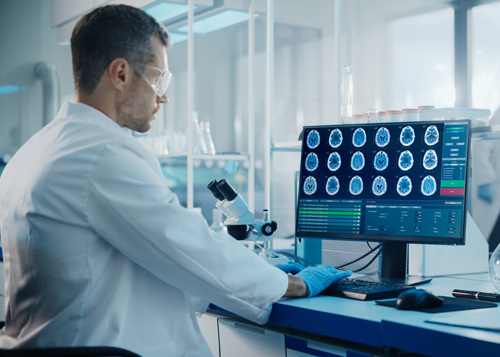Although the use of marijuana (cannabis) is more accepted today and even legal in some states, chronic usage still presents a risk for harm, abuse, and addiction.
Marijuana is derived from the dried leaves, stems, buds, and flowers of the Cannabis sativa plant. There are hundreds of chemical compounds in marijuana, some providing valuable medical applications and some delivering effects valued by recreational users.
THC (delta-9-tetrahydrocannabinol) is the psychoactive chemical in cannabis that triggers a mind-altering, euphoric effect. Marijuana plants have been carefully cultivated for decades to increase THC levels and other desirable attributes. Consequently, the marijuana of today may contain 3 times the levels of THC it once did, making it a highly potent drug.
According to the National Institute on Drug Abuse (NIDA), among people aged 12 or older in 2020, an estimated 5.1% (about 14.2 million people) reported a cannabis use disorder in the past 12 months. Approximately 17.9% (about 49.6 million people) reported using cannabis in the past 12 months.
Marijuana use disorder may be diagnosed when users have difficulty controlling use of the drug even when their use is causing problems in their daily life. If withdrawal symptoms occur when marijuana use stops, this means the body has become physically dependent on the presence of the drug. This indicates tolerance, which can lead to addiction.
A study conducted by the National Institute on Alcohol Abuse and Alcoholism (NIAAA) concluded that not only is marijuana use disorder common in the U.S., but it is also “often associated with other substance use disorders, behavioral problems, and disability, and goes largely untreated.”
Data cited by NIDA indicates about 30 percent of marijuana users have, “some degree of marijuana use disorder.” Especially at risk are those who begin using marijuana before the age of 18.
The Diagnostic and Statistical Manual (DSM) is used by physicians to diagnose substance use disorder and other mental disorders. The most current edition, DSM-5, classifies problem cannabis use as a substance use disorder.
DSM-5 uses the same criteria to diagnose and judge the severity of any substance use disorder, including cannabis. These criteria include:
If marijuana use stops after tolerance has developed, withdrawal effects may occur. These withdrawal symptoms may include mood changes, irritability, restlessness, sleeping disorders, cravings, and other discomfort.
When marijuana enters the body, it passes into the bloodstream and then into various organs, including the brain. Chemical compounds in marijuana attach to cannabinoid receptors in the brain, affecting vital activities and functions regulated by the brain, such as pleasure, focus, memory, sensory and time perception, and motor function.
As with all addictive substances, marijuana also has a strong impact on the pleasure and reward center of the brain. The human brain naturally reinforces the desire to repeat a pleasurable experience by increasing levels of chemical messengers like dopamine when something is deemed desirable.
Marijuana triggers unnaturally high levels of dopamine to be released, strongly reinforcing the drug-taking experience. As marijuana use continues, the brain rewires its own neural connectivity to continuously reinforce the behavior, further ingraining the habit. NIDA explains that as the pleasure response triggered by drug taking becomes habituated, “large surges of dopamine ‘teach’ the brain to seek drugs at the expense of other, healthier goals and activities.”
NIDA cites several studies supporting the negative effect of marijuana on brain development, especially in teens, and warns that some adverse effects may be permanent. According to the NIH, “When people begin using marijuana as teenagers, the drug may impair thinking, memory, and learning functions and affect how the brain builds connections between the areas necessary for these functions.”
The high levels of THC contained in modern strains of marijuana may have a more damaging effect on the brain. Current research links regular use of higher potency marijuana with adverse health reactions, including psychosis, a severe mental disorder that may include delusions and hallucinations.
High potency cannabis typically contains more than 10 percent THC. Many strains today have 30 percent or higher levels of THC.
The brain isn’t the only organ damaged by marijuana use. In 2017, the American College of Cardiology presented their findings regarding marijuana use and potential health risks stating, “Marijuana raises the risk of stroke and heart failure even after accounting for demographic factors, other health conditions and lifestyle risk factors such as smoking and alcohol use.”
The method of use determines how quickly marijuana effects are experienced. Marijuana is often rolled into a joint and smoked, heated and inhaled, eaten, absorbed through the skin in oil form, sprayed under the tongue, or taken by pill. Effects of marijuana that is eaten may take up to two hours or longer to be felt, while smoking or vaping effects take just minutes.
When marijuana is smoked or vaped, dangerous chemicals are inhaled into the lungs, which may contribute to chronic bronchitis, pneumonia and other lung diseases, as well as various cancers.
Even when marijuana is used legally and responsibly, it poses certain health risks and may impair cognitive and motor functions. If marijuana is causing problems in a loved one’s life, it’s important to seek professional treatment.
Synthetic marijuana is a man-made version of THC. Often called Spice or K2, it consists of plant material that has been sprayed with synthetic mild-altering chemicals and either packaged as dried material to be smoked or in a liquid form for use in e-cigarettes or other devices.
The use of Spice can present serious health risks. Because it’s unregulated, the product may contain dangerous heavy metals, pesticides, mold, or salmonella. The dosage is also uncertain and may deliver a much greater psychoactive effect than anticipated. In fact, the chemicals in Spice are estimated to be far more potent than the THC levels in marijuana, leading to an even greater potential for abuse, addiction, and adverse health effects.
As with marijuana, Spice has been linked to the development of psychosis. Multiple studies have also found that Spice may cause a dangerous increase in heart rate and blood pressure, organ damage, stroke, heart attack, and death.
Decades of studies confirm that individuals achieve the highest rates of successful long-term recovery from marijuana or substance addiction by enrolling in a quality residential or outpatient treatment program, followed by ongoing support group participation.
Treatment plans usually include individual, group, and family therapy sessions, as well as participation in a 12-step or other support group and an aftercare program. Education on addiction, stress reduction, healthy living skills, and relapse prevention are often important components of a good recovery program.
The most effective treatment plans also address co-occurring disorders (also called dual diagnosis), which refers to the presence of both a substance use disorder and another mental health disorder. According to NIDA statistics, almost 8 million adults in the U.S. have co-occurring disorders. More than half of those individuals are not receiving treatment for either disorder.
It is vital that co-occurring disorders are diagnosed and treated concurrently. Because of this, physicians, hospitals, and treatment centers need to screen patients carefully to determine if a co-occurring disorder is present.
At StoneRidge Centers, we take a unique, research-backed approach to helping patients understand, manage, and overcome their addiction and any co-occurring disorders, starting with the brain. We understand that to heal addiction, we must heal the brain. To accomplish this, we combine the best in well-established therapeutic modalities with the latest scientifically backed approaches to addiction recovery.
Clinical modalities like Cognitive Behavioral Therapy (CBT) and Dialectical Behavior Therapy (DBT) enable our patients to better understand how their thought patterns and beliefs are enabling their addiction and how to change the cycle.
The innovative neuroscience-based treatments we incorporate into the treatment plan, including Transcranial Magnetic Stimulation (TMS), qEEG/Brain Mapping, Neurofeedback, and Ketamine Therapy, help patients better identify and manage the emotional challenges inherent in addiction.
Our triple-board-certified medical director oversees all aspects of each treatment plan. From comprehensive screenings to individualized addiction recovery plans to appropriate brain-focused treatments for each patient, our medical director and highly trained staff work with each patient every step of their recovery journey.
Contact StoneRidge Centers today to find out how we can help you or a loved one heal the damage caused by marijuana, alcohol, or other substance abuse.

TMS, Ketamine & Neurofeedback
Brain-focused treatment that sets us apart.
StoneRidge offers what few other practices provide – innovative, scientifically proven, and research-backed therapeutic options. From Transcranial Magnetic Stimulation (TMS) to Brain Mapping, our treatment combines trusted practices with modern approaches, ensuring our patients receive the best all-around care.


We exercise progressive, leading brain science in our treatment approach for patients in the Prescott Valley community and across the country who are struggling with mental health and addiction challenges.
© 2025 StoneRidge Centers – Prescott Valley. All Rights Reserved.